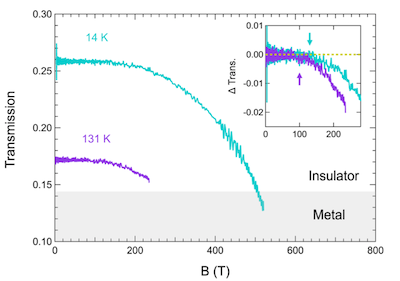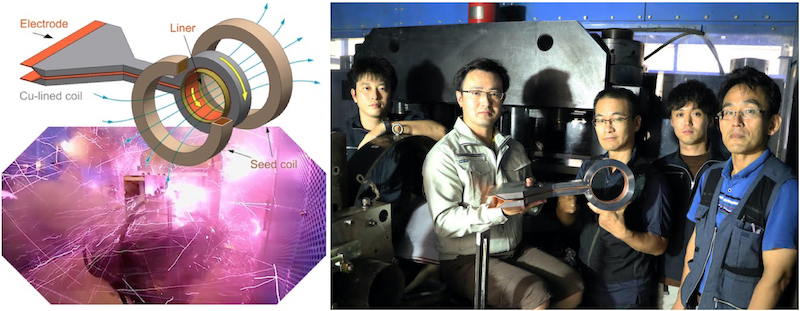
To explore and develop ultrahigh magnetic field science, we are delighted to collaborate with researchers in the user community of the European Magnetic Field Facility who are interested in the 1000 T environment. We like to discuss possible collaboration with those who have specific ideas for ultrahigh fields exceeding 300 T, which cannot be reached by the single-turn coil technique. Moreover, we are seeking to deepen the cooperation of ISSP with EMFL in a more formal way.
The multi-megagauss field research offers opportunities to challenge many intriguing physical topics, including (i) the full spin control of strongly correlated electrons, (ii) research on the low-temperature normal-state nature of high-Tc superconductors, (iii) investigation of effects of wave-function shrinkage on molecules and atoms, and (iv) the study of quantum spin physics with strong interactions. In relation to (i), we recently found a novel field-induced insulator-metal transition in W-doped VO2 at 500 T (Figure 1) [1]. We may also find further intriguing topics in interdisciplinary areas collaborating with chemists, biologists, or astrophysicists.

40 years ago, Prof. Chikazumi launched a project to realize extremely high magnetic fields by using EMFC at ISSP, and the project was taken over by Profs. Miura and Takayama. In 2018, a magnetic field of 1200 T was produced using EMFC pushing the frontiers of science (see also [2, 3]). By producing 1000 T in an indoor experimental environment, several kinds of precision measurements have become possible even in this ultrahigh field range.

In contrast to millisecond to sub-second pulse duration of a non-destructive pulsed magnet, the megagauss field lasts only for several microseconds, resulting in a very large dB/dt. Electromagnetic noises from the high voltage (50 kV) and large current (8 MA) circuit for the field generation sometimes disturbs precise measurements. Under these technical conditions, an optical experiment of an insulator is the most suitable experiment from the technical point of view. Electrical measurements of metallic samples requires to meet specific conditions depending on the parameters of each sample. In principle, we need a very thin film or wire, or small particle for experiments of metallic substances to avoid heating of the samples. Moreover, not only a high-field coil but also a measurement sample is destroyed for the 1000 T experiments with the EMFC field generator.
For further information, see the references below.
If you have a potential plan for a collaboration with us, please send a short outline to us. We will consider the possibility and reply. Your messages will be kept classified.
Yasuhiro H. Matsuda, IMGSL-ISSP Kashiwa, University of Tokyo
ymatsuda(at)issp.u-tokyo.ac.jp
English / Japanese